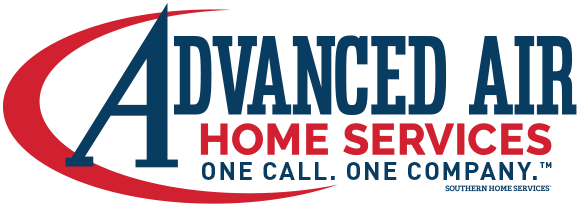As the temperature outside begins to drop, it’s important to make sure that your home is safe and comfortable for the season. With the right preparation, you can better prevent exterior damage and help reduce home heating costs. Follow this helpful guide for learning how to winterize your central air conditioning, indoor HVAC system, plumbing, electrical, and more.
When To Winterize Your Home
Ideally, you’ll want to begin your home winter prep in early fall. This way, you have time to work through your checklist and schedule any inspections, tune-ups, repairs, or installations before the temperatures drop.
For exterior home prep such as draining your outdoor water systems or shutting off your central air conditioning unit, these tasks can usually wait until later in the fall season, since the temperature outside is usually still warm.
Southern Home Winterization
Although you may not need to schedule snow removal services or worry about frozen pipes, winterizing your southern home still involves prepping your HVAC system and your home’s interior and exterior.
How to Winterize Your HVAC System
- Schedule a tune-up. Before your heater begins working full-time, make sure to have it serviced by a professional. This will help it to run more efficiently and prevent untimely breakdowns.
- Replace the furnace filter. A new furnace filter is important not just for the efficiency of your heating system, but also to help indoor air quality. As you spend more time indoors during the winter months, dust, dirt, and humidity build up and can be harmful to your health.
- Winterize your outdoor AC unit. Start by shutting off the unit on the dedicated circuit. Next, you’ll want to clear any surrounding debris, then use a damp cloth or hose to carefully wash away any dirt. If you want to keep your unit better protected, you can choose to cover it as well. Just make sure to regularly check for mildew or mold growth throughout the winter.
- Test your thermostat. A broken thermostat is less than ideal on an extremely chilly day. Make sure it’s functioning properly well ahead of the cold. You may even want to consider upgrading to a smart thermostat to help cut back on energy use and more easily maintain your home’s heating and cooling.
Related content: Keeping Your Senses Sharp This Season for Gas Leaks
How to Winterize Your Home Interior
- Weatherproof cracks. First, inspect your home for any cracks or drafts. Most often, you’ll find them around your windows and doors. Sealing these cracks with caulk or installing weatherproofing for drafts will help prevent any warm air from escaping, and cool air from sneaking in. If you already have weatherproofing installed, check to see if it needs replacing.
- Switch your ceiling fan direction. Changing the direction of your ceiling fan can make a huge difference in improving your home’s airflow, helping the temperature to feel more comfortable. Because warm air rises, switching your fan to a clockwise direction in winter will help create an updraft to help the trapped air circulate back into your space.
- Have your ducts cleaned. If it’s been a while since your last duct cleaning, now is the time to schedule service. Clean air ducts are essential for a well-functioning HVAC system and healthier indoor air.
- Test your smoke and carbon monoxide detectors. A well-sealed home and increased use of your heating system can put your home at a higher risk of fire or carbon monoxide poisoning. Test your batteries and make sure your detectors are functioning properly before the cold hits.
How to Winterize Your Home Exterior
- Clean the gutters. During the colder months, your gutters can quickly fill up with debris which can lead to dangerous mildew and mold growth in addition to making your gutters less effective at carrying water away from your home.
- Winterize outdoor faucets. While low temperatures aren’t as common in southern climates, exposed exterior pipes can still freeze at temperatures of 32 degrees Fahrenheit or below. Because of this, it’s a good idea to winterize your outdoor faucets by removing and storing any hoses, then draining and shutting off your faucets.
- Protect or store outdoor furniture. Protect your outdoor furniture from debris buildup, potential mold growth, or rust by storing it away in a cool, dry place.
Keep Your Southern Home in Top Shape This Winter
Need some help prepping your home for the colder months? Count on your local Edgewater, FL HVAC professionals at Advanced AirHome Services for all your heating, plumbing, or electrical needs this winter. We’ll make sure your home is safe and comfortable for the winter season. Call 386-260-2330 [OUW7] or request service online to get started.



